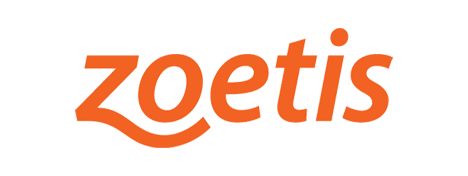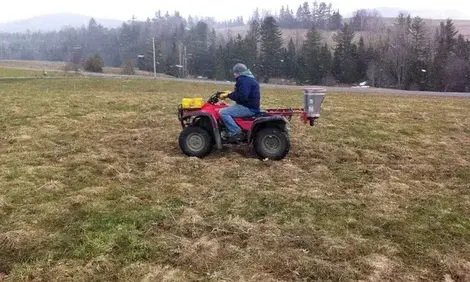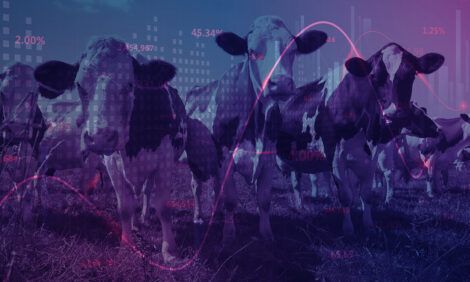



World Dairy Expo: BRD’s impact on calf health and future productivity
Young heifers have a big job ahead of them – what does early BRD mean for their long term health?
Dr. Matt Boyle, director of Cattle Technical Services at Zoetis, spoke to The Dairy Site’s Sarah Mikesell at World Dairy Expo in Madison, Wisconsin, USA.
As future replacements of the milking herd, young heifers have a big job ahead of them that starts when they hit the ground. It's no secret that calfhood bovine respiratory disease (BRD) is detrimental.
Explain how BRD can impact calf health and future productivity.
One of our campaigns at Zoetis that we talk about is calf wellness, and calf wellness is so important because we know that the health of our calves is foundational to the long-term profitability and performance of those animals that are going to be the future milking herd. Raising a healthy calf is critically important to the long-term success and health of the dairy.
BRD is one of those diseases that can significantly impact calves in a negative way, not just in the short-term. I know that I've got a calf today and I have to send somebody out to treat that calf which means I'm going to spend some money on an antibiotic or I have to call out the veterinarian. But it's the long-term more insidious impacts that continue to plague the profitability of that animal for the rest of her life.
It's well documented with research that calves that experience a case of BRD or pneumonia are less likely to make it to first calving. They take longer to get pregnant, and if they do get pregnant, they're more likely to have a calving difficulty. Probably most costly is that once they enter the milking herd, they have decreased milk production in their first lactation and depending on what study you look at, even the second lactation. So while you might find a research paper that would suggest the cost of a case of BRD is $250 to $300 per case, it can be a lot more expensive when you factor in all the other costs associated for the rest of her life.
Is this an industry shift in thinking?
It's certainly been a change in the way that the industry thinks about raising calves over the last 10 to 12 years where calves used to be thought of as an expense because they're not generating any income for two years.
But there's been a paradigm shift now where most of our dairy industry and certainly our progressive producers are thinking about our heifers and young stock as an investment. All those things that you're putting into the calf in the first two years of life, colostrum, wet calf nutrition, vaccines - we've got to think about it as an investment for the future success of the whole business.
How do you advise producers and veterinarians to safeguard calves against BRD?
The short answer is to think about it in terms of prevention. Of course, prevention is a lot of things - you have to think about it in totality, the whole concept of prevention. That means working with your veterinarian to develop health and vaccination protocols.
It's investing in your people who take care of the animals to put a good colostrum program in place. Perhaps working with a local consultant on ventilation and other things around housing. In short, it's prevention, but prevention is a big concept that involves lots of moving parts, and we can't just attack it from one angle. We have to be thinking about all of those things that can influence the rates of respiratory disease in our calves.
It's not just when they're young. As you said earlier, think of it over the long term, right?
That’s absolutely right. We're going to be investing in our animals for more or less two years until they calve the first time. But for today's conversation, thinking about pneumonia, most of the pneumonia in calves is going to happen in the first six months of life. Often, it occurs in the first 90 to 100 days of life. In terms of BRD, that's our biggest time impact - those first several months of life. Then once we get beyond six to eight months of age, our respiratory rates drop pretty significantly.
How can producers learn more about calf wellness and BRD prevention?
Always remember to lean on your local veterinarian – your vet works with your farm and has the broadest knowledge of your farm’s animal health and prevention protocols, so they're going to have a very clear understanding of what's happening on your particular operation.
You can also reach out to your Zoetis representative who can put you in contact with our local technical service veterinarian or other resources that we offer. If you would like to look for resources on your own, you can navigate to calfwellness.com where you'll find a lot of the resources, products and tools that Zoetis offers the dairy industry.




